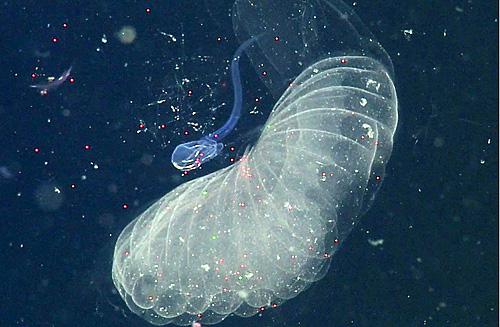Larvaceans provide a pathway for transporting microplastics into deep-sea food webs

Over the last decade, scientists have discovered tiny pieces of plastic in many ocean waters, and even in deep-sea mud. However, they know very little about how microplastics are transported within the ocean. A new paper by MBARI researchers in the journal Science Advances shows that filter-feeding animals called giant larvaceans can collect and consume microplastic particles in the deep sea. The particles accumulate in larvaceans' cast-off filters and are passed into the animals' fecal pellets, which sink rapidly through the ocean, potentially carrying microplastics to the deep seafloor.
Read more at: https://phys.org/news/2017-08-larvaceans-pathway-microplastics-deep-sea-food.html#jCp

